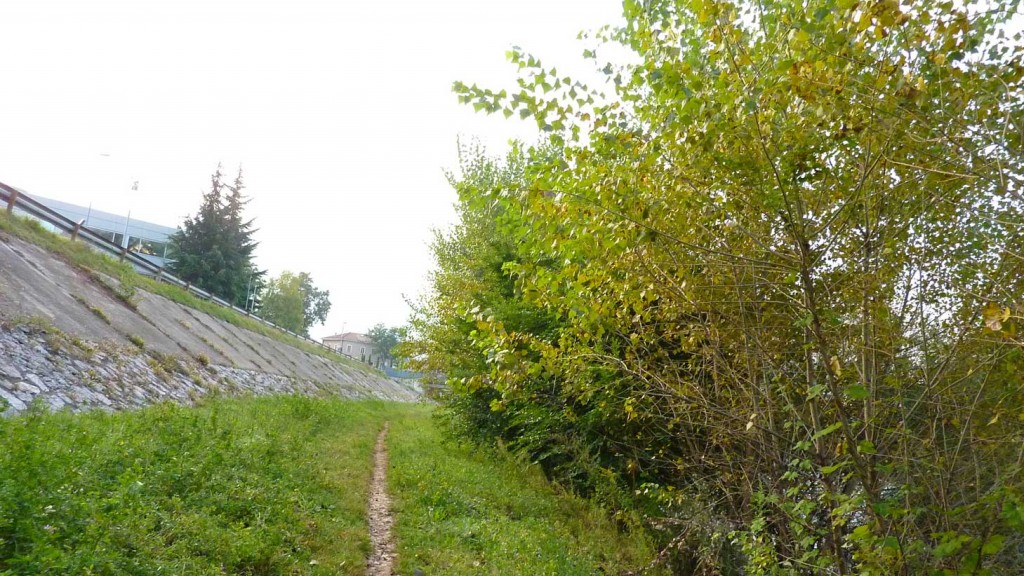Invited Speech at – https://www.unitn.it/archivio/events/pensatrasversale2012.html
Abstracts here
Invited Speech at – https://www.unitn.it/archivio/events/pensatrasversale2012.html
Abstracts here
in Nebulosa – Zeitschrift für Sichtbarkeit und Sozialität, no. 1: 16-32
(Img: Fernand Deligny – Lignes d’erres)
Pubblicato in Cosmopolis, VI, 2/2011
La maggior parte delle critiche mosse contro i mass media e la società di massa durante il corso del ventesimo secolo sono state, come ben si sa, critiche rivolte contro la passività, l’anomia e l’alienazione del fruitore. Tali effetti venivano imputati in primo luogo al diagramma stesso del flusso di comunicazione, alla sua forma broadcast, uno-molti (o meglio, pochi-molti, considerato che gli emittenti sono comunque sempre un gruppo, per quanto ristretto, di professionisti organizzati). I mass media erano allora, come si espresse Jean Baudrillard, “parola senza risposta”. In tal senso, la radice comune delle pratiche e delle tecniche di propaganda (la fabbricazione politica della verità che può raggiungere livelli totalitari) e pubblicità (la fabbricazione economica di miti, sive racconti, di consumo e godimento) è stata più volte rimarcata (senza dimenticare, peraltro, che l’origine della propaganda è religiosa, e che la forma gerundiva del termine contiene una precisa istanza di dover-essere). Così ad esempio, per i situazionisti, le immagini della comunicazione mediata davano vita a una forma sociale che essi chiamarono “spettacolo”, un regime di separatezza dell’immagine dalla vita quotidiana e di conseguente espropriazione dell’esperienza vissuta: le immagini spettacolari, per così dire supra-visibilizzate, si diceva, costituivano un nuovo stadio del capitale, in cui ogni rapporto sociale era definitivamente sussunto al dominio.
Continue reading
a book by Mattias Kärrholm
http://www.metropolitiques.eu/The-new-spaces-of-consumption.html
 (co-authored with Cristina Mattiucci) ‘Visualising the riverbank’, in City: analysis of urban trends, culture, theory, policy, action, Volume 16, Numbers 1-2, 1 April 2012 , pp. 221-234
(co-authored with Cristina Mattiucci) ‘Visualising the riverbank’, in City: analysis of urban trends, culture, theory, policy, action, Volume 16, Numbers 1-2, 1 April 2012 , pp. 221-234
http://www.ingentaconnect.com/content/routledg/ccit/2012/00000016/F0020001/art00019
Abstract
Drawing on ethnographic observation of a tract of urban riverbank in the city of Trento, in northern Italy, we attempt to link phenomenological observation of social interaction in public places with larger political concerns about contemporary urban public space. While agreeing with Low et al. (Rethinking Urban Parks: Public Space & Cultural Diversity. Austin: University of Texas Press, 2005) that in order to foster public spaces it is necessary to accommodate the differences in the ways social classes and ethnic groups use and value urban sites, we also argue that one should be wary of planning hubris—which can occur in even `good-willed’ planning, and leads to the creation of domesticated and formalised, but also inherently restricted, spaces for encountering differences.
Symbolische Aktionen für unsere Gegenwart
Azioni simboliche per il nostro presente
Jederland presents
Fr, ve 02.12.2011 // h 15-17.30 // Lungomare Bozen-Bolzano
Öffentlichkeit und Gemeinschaftlichkeit messen
Misurare pubblico e comune
Workshop mit, con Andrea Mubi Brighenti (Soziologe, sociologo)
& Pierangelo Schiera (Staatshistoriker und Politikwissenschaftler / storico dello stato e politologo)
in Scienza & Politica, 44/2011
Disponibile qui: http://www2.spbo.unibo.it/dist/scienzaepolitica/index.php/scipol/article/view/350/347
with Paul Blokker
European Journal of Social Theory August 2011 vol. 14 no. 3 283-300
http://est.sagepub.com/content/14/3/283.abstract
Abstract
The article discusses the status and role of politics — in its various facets — in the pragmatic sociology of critique. We focus on a number of different dimensions of politics — politics-as-justification, politics-as-distribution, politics-as-constitution, and politics-as-defiance — that can said to be of importance for a pragmatic sociology of critique, but that have not all been taken up equally in this approach. We situate pragmatic sociology in a tradition of thought that views politics as emerging in the settlement of disputes over differences without resorting to violence. However, we argue that pragmatic sociology tends to ignore questions of the constitution of politics, and suggest that one way of bringing the foundational aspect upfront is by conceptualizing and studying defiance, including forms of explicit (dissent) and implicit critique (resistance) of the existing order.

Thesis Eleven August 2011 vol. 106 no. 1 73-87
http://the.sagepub.com/content/106/1/73.abstract
Abstract
The attempt by Arnason and Roberts to interpret Canetti’s work in the context of social theory is taken here as the point of departure to investigate Canetti’s view on the phenomenon of resistance. Resistance is explored in the context of Canetti’s reflection on power and transformation. Further, it is argued that through his substantive concern for crowds (but also for packs, or small bands), an epistemological challenge emerges for social theory. Canetti gives us some precious insights on phenomena of ambiguous multiplicity, which are neither simple sums of separate individuals nor an ontologized Durkheimian collective. Not only this, he resolutely ventures towards the contingency at the foundation of social order, the ‘just-thisness’ of power, revealing its non-symbolic basis in gestures that impart affects. It is at this level that resistance can be best understood as a movement of liberation from the grip of power.
Available at | http://www.mundossociais.com/livro/uma-cidade-de-imagens/37
My chapter in the book | “Imaginacções”. Imagens Actuantes e a Imaginação dos Territórios Urbanos

(Still from Yasujirō Ozu’s 1953 movie Tokyo Story)
Available at : http://www.spaceandculture.org/2011/05/26/book-review-milieu-and-human-identity-notes-towards-a-surpassing-of-modernity/
Urban Studies April 12, 2011
doi: 10.1177/0042098011400771
Abstract. The paper aims to contribute to the study of new media technologies in urban environments. It unfolds at two levels, epistemological and substantive. First, it discusses the issue of the conceptual tools that we can deploy to understand new media, arguing in favour of notions and methods that enable research to capture the double nature, socio-technical and bio-political, of the new media in urban environments. In particular, the paper claims that new media can be seen as a continuation of the process of ‘urbanisation of territory’ described by Foucault, aimed at the creation of a flexibly controllable space of events. Secondly, it criticises substantively the techno-enthusiast user-empowerment ideology that surrounds new media and addresses issues of inequality, control and resistance in and through new media in the city. The argument is that the augmented, hybrid or mixed urban reality of new media like personal and locative media is neither determinist nor unboundedly mobile. While the freedom of movement and the diverging styles of mobility are becoming a crucial factor of stratification, new tensions and struggles over the nature of urban ‘events’ are likely to take place.
.
http://usj.sagepub.com/content/early/2011/04/12/0042098011400771.abstract
Canetti and Foucault on the notion of resistance
Distinktion: Scandinavian Journal of Social Theory
Volume 12, Issue 1, 2011, Pages 57 – 78
https://doi.org/10.1080/1600910X.2011.549331
(avec quelques allusions foucaldiennes évidentes)
Available at: http://www.scriptopolis.fr/des-choses-aux-mots/
in Giovanna Sonda, Claudio Coletta, Francesco Gabbi (eds.) Urban Plots, Organizing Cities. Farnham: Ashgate, pp. 23-34.